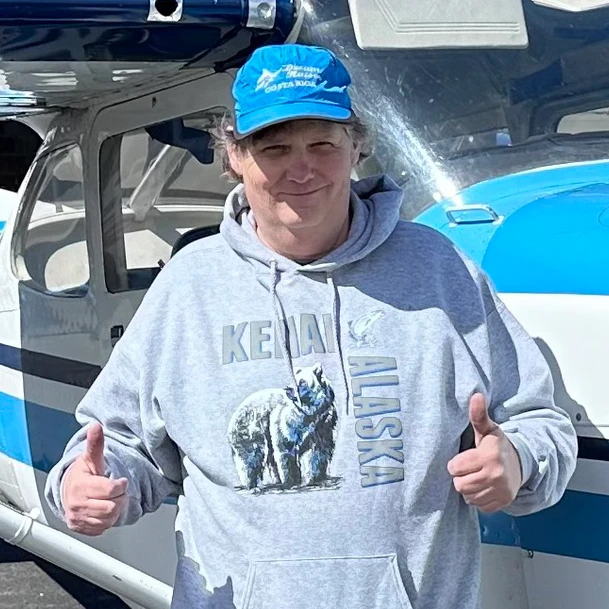While massive brown bears tend to get all the attention, Alaska is also home to equally impressive black bear populations throughout its forests and mountains. For those seeking an intimate encounter with these majestic creatures, consider this Your Ultimate Guide to Bear Viewing in Alaska, An Unforgettable Experience.
Getting to observe these incredible creatures in their natural habitats is indeed an unforgettable privilege. Read on to Meet Alaska’s Bears: An In-Depth Look at Alaska’s Majestic Creatures.
Black Bear Identification
- Size: 5-6 feet long and around 200-300 lbs. Much smaller than brown bears.
- Fur: Fluffy and black in color, though can sometimes appear brown or blonde. Has a faint white patch on the chest.
- Claws: Shorter claws than brown bears for tree climbing.
- Diet: Opportunistic eaters but mostly vegetation like berries, plants, nuts.
- Behaviors: Excellent climbers and swimmers. Shy and typically avoid humans.
Where to Find Black Bears in Alaska
- Interior mountain ranges like the Brooks Range and Alaska Range
- Denali National Park and Preserve
- Tongass National Forest in Southeast Alaska
- Anchorage and the Matanuska-Susitna Valley
- Farther north and west in locations like Fairbanks and the Seward Peninsula
Anywhere with forest and shrub coverage you may encounter black bears foraging.
Best Time to See Black Bears
- Early summer: Bears emerge from dens with new cubs. Berries aren’t ripe yet so they focus on protein sources.
- Mid summer: Peak feeding on ripened berries like salmonberry, blueberry, and huckleberry. Easy to spot bears in shrubbery feasting on berries.
- Fall: Bears actively forage to pack on extra fat before denning season. Good visibility.
- Spring: Females emerge from dens with new cubs. Limited viewing as bears seek food.
Black Bear Viewing Tips
- Pack bug spray – Bears forage in shrubby habitat prone to mosquitoes.
- Use spotting scopes/binoculars – Black bears are smaller and harder to spot in forests.
- Pay attention to sounds – Black bears make distinct jaw popping and woofing sounds when feeding.
- Look for day beds – Flattened grassy areas where bears rest temporarily.
- Examine trees – Fresh claw marks indicate bears are climbing trees in the area.
Seeing a black bear climbing a tree or grazing on berries is a special treat for Alaska visitors. Experienced guides like Captain Mel Erickson can help you find and view these remarkable animals respectfully. Contact the team at Bear Viewing in Alaska to start planning your black bear adventure!
Phone Number: 1-907-398-1744
Email Address: gamefish@alaska.net








